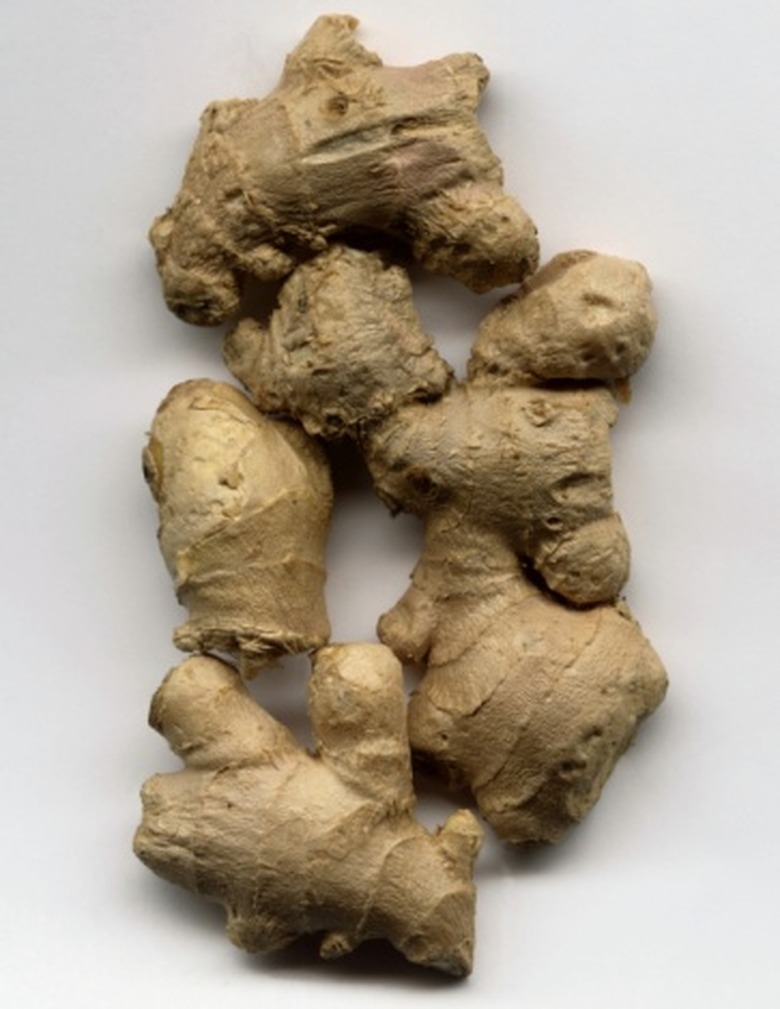Characteristics Of Ginger
Ginger is a gnarled rhizome that adds a distinctive sharp bite to baked goods and savory foods. It has been used for thousands of years as a medicine for a multitude of ailments. Ginger is readily available as a powdered spice, fresh in produce departments and in pill form in the vitamin aisle.
Appearance
The part of ginger that's used most often is the root. Ginger root is beige in color with a knotted, rough appearance. The part of the plant above the ground is a foot long upright stem with long, narrow leaves. The leaves are green and ribbed in texture. Ginger flowers are small and white or yellow-green in color. The useable part of the root is a rhizome, which is how the plant propagates itself.
- Ginger is a gnarled rhizome that adds a distinctive sharp bite to baked goods and savory foods.
- The useable part of the root is a rhizome, which is how the plant propagates itself.
Medicinal Uses
Ginger's antinausea properties make it an effective medication that people have used for thousands of years. Eating ginger candy or taking capsules of powdered ginger settles the stomach and is useful for treating motion sickness and nausea caused by chemotherapy. Ginger may be taken to help treat morning sickness in pregnant woman, but should not be taken without a doctor's permission. Ginger may also be taken to help with inflammation, circulation problems and respiratory problems such as congestion.
Culinary Uses
When used as a spice, ginger is both hot and sweet. It's often used in a powdered form in baking, such for gingerbread or ginger cookies. It also adds a sharp tang to savory foods. Ginger is sold for culinary use in powdered form, in crystallized pieces and fresh for use during cooking. Ginger is used to flavor carbonated soda, called ginger ale. It's also used in beer making.
- Ginger's antinausea properties make it an effective medication that people have used for thousands of years.
- It's often used in a powdered form in baking, such for gingerbread or ginger cookies.
Contraindications
While ginger has a long history of medicinal and culinary use, there are some situations when it's best to avoid it. Ginger may interact with some prescriptions or other-the-counter medications. Talk to your doctor before using ginger regularly to treat nausea or other problems if you're taking other medications.
